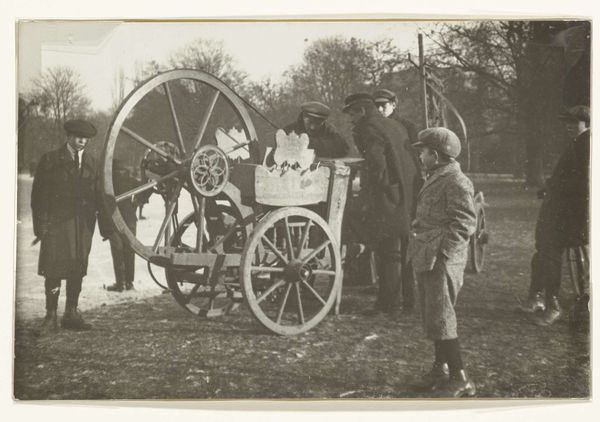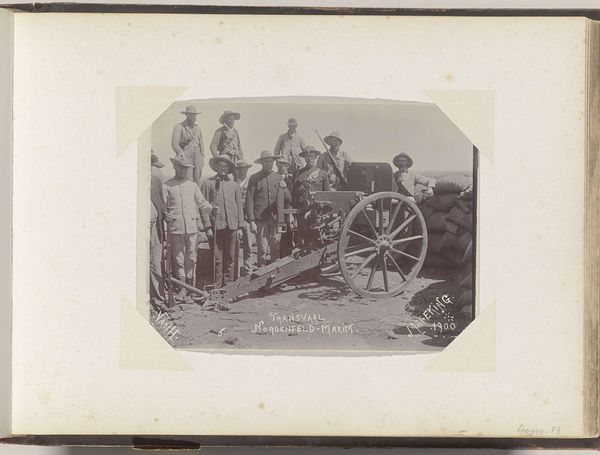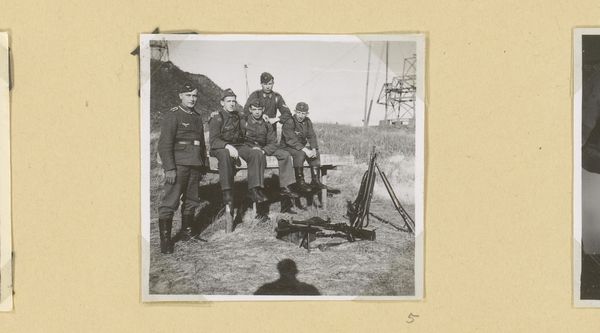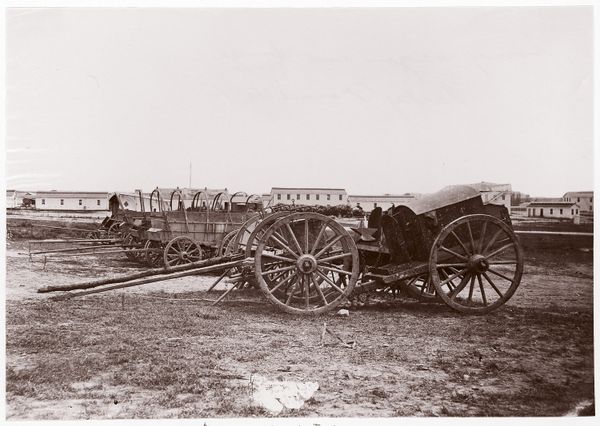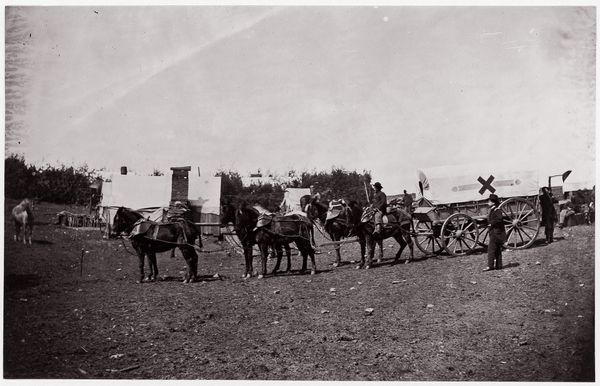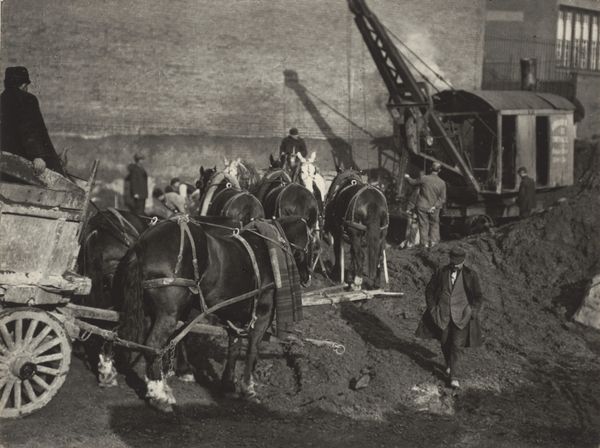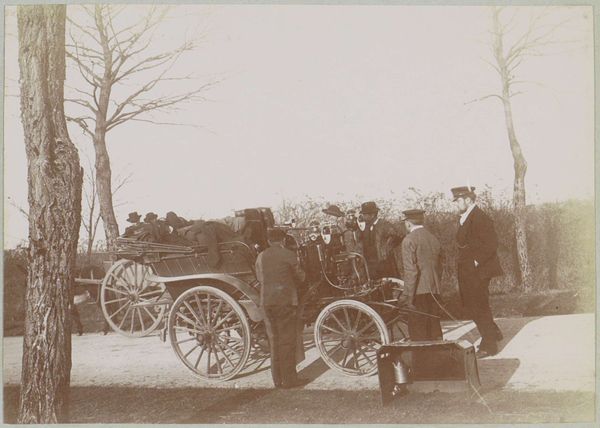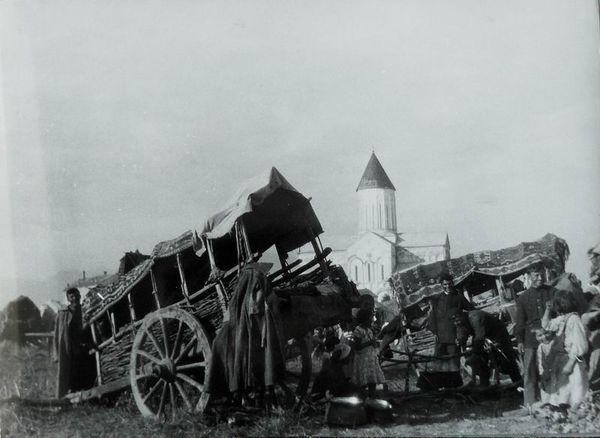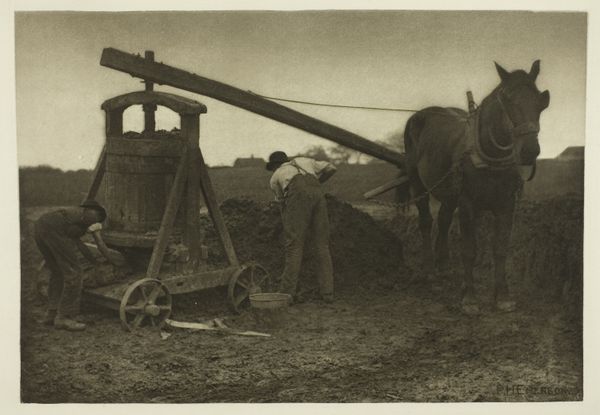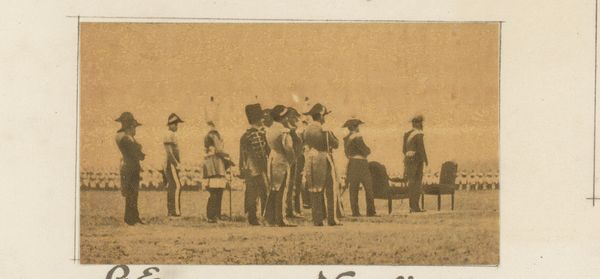
photography, gelatin-silver-print
#
landscape
#
photography
#
gelatin-silver-print
#
history-painting
#
realism
Dimensions: height 77 mm, width 113 mm
Copyright: Rijks Museum: Open Domain
Curator: Before us, we have a gelatin-silver print from 1896 entitled "Militaire oefening met hindernis te Fontainebleau"—"Military Exercise with Obstacle at Fontainebleau." The photographer's name, unfortunately, remains unknown. Editor: My initial response is that it conveys a feeling of both the commonplace and of strange precision. It almost has an otherworldly tone due to the composition and the subjects in motion. Curator: Absolutely, there’s an intriguing stillness despite the action. Look closely at the arrangement of forms—the ladder-like obstacle creating diagonals, the figures clustered to the left, balanced by the solitary soldier on the right. There's an almost architectural quality in the placement of forms in space. Editor: And consider the political context! The image of soldiers, and equestrian skill intertwined in what looks like peacetime military preparedness, raises crucial questions about empire building and power projection that are inherently embedded in militarism, no? Curator: Of course, one can analyze the political motivations here and read it as a marker of the era, the visual encoding of military power and control in 19th-century France. But consider its artistic form – it adheres to many conventions of realist landscape traditions as well. Editor: To see it only as visual formalism is, in my opinion, insufficient. The composition creates the possibility for historical dialogue. These obstacles were designed, in their way, to enforce state power via controlling individuals, horses, even land… to focus simply on aesthetic experience distracts from this. Curator: Fair enough, but there's a deliberate focus that separates it from simple propaganda. The subtle variations in the tonality achieved using gelatin-silver – these are deliberate attempts to depict an objective reality that go beyond mere ideology. Editor: However, that so-called objective reality hides power relationships. The photograph reproduces the prevailing military and patriarchal dominance of the time. So, ultimately the form reflects this and acts like an active participant within the historical politics. Curator: A compelling point. On closer inspection, this initially static composition unveils a multitude of perspectives indeed. Editor: Absolutely! It prompts us to reflect on the image’s function in shaping or reflecting prevailing historical dynamics of control and power.
Comments
No comments
Be the first to comment and join the conversation on the ultimate creative platform.
